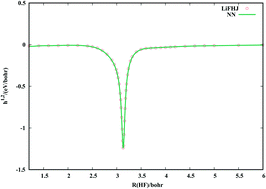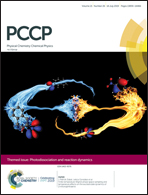Representation of coupled adiabatic potential energy surfaces using neural network based quasi-diabatic Hamiltonians: 1,2 2A′ states of LiFH
Abstract
An analytic quasi-diabatic representation of ab initio electronic structure data is key to the accurate quantum mechanical description of non-adiabatic chemical processes. In this work, a general neural network (NN) fitting procedure is proposed to generate coupled quasi-diabatic Hamiltonians (Hd) that are capable of representing adiabatic energies, energy gradients, and derivative couplings over a wide range of geometries. The quasi-diabatic representation for LiFH is used as a testing example. The fitting data including adiabatic energies, energy gradients and interstate couplings are obtained from a previously fitted analytical quasi-diabatic potential energy matrix, and are well reproduced by the NN fitting. Most importantly, the NN fitting also yields quantum dynamic results that reproduce those on the original LiFH diabatic Hamiltonian, demonstrating the ability of NN to generate highly accurate quasi-diabatic Hamiltonians.

- This article is part of the themed collection: Photodissociation and reaction dynamics


 Please wait while we load your content...
Please wait while we load your content...